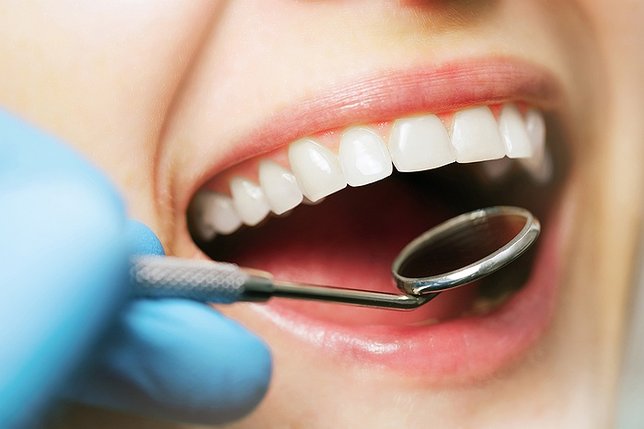With February being National Children’s Dental Health Month, the personal-finance website WalletHub today released its report on 2024's States with the Best & Worst Dental Health, as well as expert commentary.
In order to determine where people have the healthiest teeth and gums in the U.S., WalletHub compared the 50 states and the District of Columbia across 25 key metrics. The data set ranges from the share of adolescents who visited a dentist in the past year to dental treatment costs to dentists per capita.
Dental Health in New York (1=Best; 25=Avg.):
- Overall Rank: 30th
- 24th – % of Adolescents Who Visited a Dentist in the Past Year
- 25th – % Of Adults Who Visited a Dentist in the Past Year
- 38th – Dental Treatment Costs
- 34th – Dentists per Capita
- 10th – Sugar-Sweetened Beverage Consumption
- 17th – % of Adults with Poor or Fair Oral Condition
- 31st – % of Adults Who Experienced Oral Pain in the Past Year
- 36th – % of Adults with Low Life Satisfaction Due to Their Oral Condition
For the full report, please visit:
https://wallethub.com/edu/states-with-best-worst-dental-health/31498
Expert Commentary
What tips do you have for a person who wishes to maintain dental health without breaking the bank?
“Maintaining good dental health is essential, and it does not necessarily have to be expensive. A crucial step is practicing diligent oral hygiene. This includes brushing your teeth at least twice a day and making flossing a daily habit…Additionally, it is beneficial to use fluoridated toothpaste and mouthwash…Another important aspect is being mindful of your diet. Try to limit the intake of sugary and acidic foods and beverages…Regular dental check-ups and cleanings are also vital. While it might seem like an added expense, these preventive measures can help you avoid costlier treatments in the future. Moreover, explore affordable dental care options. Community health centers or dental schools often offer services at reduced rates…Finally, investigate insurance coverage or discount plans that include dental services.”
Y. Tony Yang – Endowed Professor; Associate Dean, Health Policy and Management, The George Washington University
“First and foremost, the absolute best way to maintain dental health on a budget is to make sure you keep up with your oral hygiene. This means brushing your teeth twice a day for two minutes at a time and flossing at least once a day. Furthermore, you must see your hygienist every six months for a cleaning. The hygienist can clean places that you miss and can clean areas that are more difficult to clean at home. The more routine you are with your oral hygiene the less likely more expensive issues will occur because you either prevent decay or catch decay early. If, however, you find yourself already in a painful situation with a tooth, and your financial situation doesn't allow for unplanned expenses, many locations have free or reduced cost clinics. Often, however, you will need to do a little digging and calling around to find these clinics, but they are out there.”
Philip K. Morton, Ph.D., D.D.S. – Professor, Murray State College
Should dental coverage be included as part of standard health insurance or covered by Medicaid?
“Without question, yes! Poor oral health leads to so many significant and often chronic health conditions including cardiovascular disease, diabetes, cancer, and obesity to name a few…Dental coverage should be included in both standard health care coverage policies as well as Medicare and Medicaid. Proper, consistent dental care should be viewed as a critical primary prevention measure for the prevention of other diseases.”
Dr. Janie Petrillo – Retired Associate Professor, Kennesaw State University
“The pros of including dental coverage in standard health insurance or Medicaid include the potential to ensure that more people have access to affordable dental care, leading to better overall oral health and potentially reducing healthcare costs associated with untreated dental problems. However, there are cons to consider, such as the increased costs for insurance providers and taxpayers that may result from integrating dental coverage into standard health insurance or Medicaid. Additionally, there may be challenges in ensuring that dental care providers are adequately reimbursed for their services, which could lead to limited access for those with coverage.”
Y. Tony Yang – Endowed Professor; Associate Dean, Health Policy and Management, The George Washington University
Should school sealant programs be extended more aggressively, especially in low-income areas in order to better prevent tooth decay in the school-age population?
“Yes. Dental sealants – professionally placed plastic coatings over the grooves of back teeth – are also promoted by all recognized dental authorities as effective and cost-effective approaches to preventing tooth decay. Because poor and low-income children experience more tooth decay than their more affluent peers, targeting sealant programs in their schools holds the greatest promise of reducing disease burden.”
Burton L. Edelstein DDS MPH – Professor Emeritus, Columbia University Irving Medical Center; Special Lecturer, Columbia University College of Dental Medicine
“Absolutely. Sealants are extremely effective at preventing decay on permanent molars that should last an entire lifetime. Too often first molars, which erupt around the age of six, suffer neglect from poor oral care when a child is young and ultimately need a lot of work as an individual ages. Of course this is often avoided in households that prioritize oral health and routine visits to their dentist. Unfortunately, this is not a common story for those children in low-income areas. An increase in school sealant programs would give many children a head start on a healthy mouth and help these individuals keep a critical chewing tooth.”
Philip K. Morton, Ph.D., D.D.S. – Professor, Murray State College










